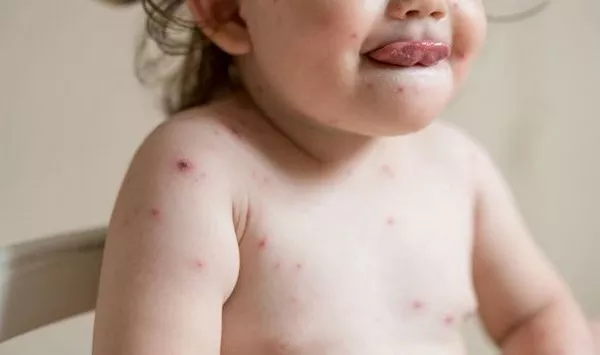Shingles, caused by the varicella-zoster virus (VZV), is a painful rash that typically affects older adults who have previously had chickenpox. However, the impact of shingles extends beyond the elderly population, raising concerns about its potential dangers for vulnerable groups such as newborns. While shingles itself is not directly contagious, the virus that causes it can be transmitted to individuals who have not had chickenpox or the chickenpox vaccine, including newborn babies. Understanding the risks posed by shingles to newborns is crucial for parents, caregivers, and healthcare professionals alike.
What Is Shingles?
Before delving into the dangers of shingles for newborns, it’s essential to understand what shingles is and how it develops. Shingles is caused by the reactivation of the varicella-zoster virus, the same virus responsible for chickenpox. After a person has had chickenpox, the virus remains dormant in their nervous system. In some cases, typically later in life or when the immune system is weakened, the virus can reactivate, leading to shingles.
The primary symptom of shingles is a painful rash that usually appears as a band or patch on one side of the body. Other symptoms may include fever, headache, fatigue, and sensitivity to light. While shingles itself is not generally life-threatening, it can cause significant discomfort and complications, especially in certain populations.
Risks to Newborns
Newborn babies are particularly vulnerable to infections due to their immature immune systems. Exposure to the varicella-zoster virus, whether through direct contact with shingles lesions or from a caregiver with active shingles, can pose serious risks to their health. Unlike older children and adults who may have already been exposed to the virus through chickenpox or vaccination, newborns lack this immunity.
If a newborn is infected with the varicella-zoster virus, they may develop a severe form of chickenpox, known as neonatal varicella. Neonatal varicella can lead to complications such as pneumonia, encephalitis (inflammation of the brain), and even death in some cases. The severity of the illness often depends on the timing of exposure, the gestational age of the baby at birth, and the overall health of the infant.
Transmission and Prevention
Shingles itself is not directly contagious, meaning a person with shingles cannot directly transmit the virus to another person. However, the virus can be spread through direct contact with the fluid from shingles blisters. This fluid contains the varicella-zoster virus and can infect individuals who have not had chickenpox or the chickenpox vaccine, including newborns.
Preventing the transmission of the varicella-zoster virus to newborns requires vigilance and proactive measures. Caregivers who have active shingles should take precautions to prevent the spread of the virus to the baby. This includes avoiding direct contact with the baby, especially touching the baby with unwashed hands or coming into contact with the baby’s saliva or mucous membranes.
Additionally, vaccination plays a crucial role in preventing shingles and reducing the risk of transmission to vulnerable populations, including newborns. The varicella vaccine, typically administered as part of routine childhood vaccinations, provides immunity against both chickenpox and shingles. Ensuring that caregivers and close contacts of newborns are vaccinated can help create a protective barrier against the virus.
Recognizing the Signs
Early recognition of shingles symptoms in caregivers and close contacts is essential for preventing transmission to newborns. Shingles typically begins with a tingling or burning sensation, followed by the development of a rash. The rash may progress to fluid-filled blisters, which can be highly contagious.
Caregivers who develop symptoms of shingles should seek medical attention promptly and take appropriate precautions to prevent spreading the virus to others, especially newborns. This may include avoiding close contact with the baby until the rash has crusted over and practicing good hygiene measures to reduce the risk of virus transmission.
Treatment and Management
If a newborn is exposed to the varicella-zoster virus and develops symptoms of chickenpox or shingles, prompt medical evaluation and treatment are essential. Treatment may include antiviral medications to reduce the severity and duration of the illness, as well as supportive care to manage symptoms and prevent complications.
In cases of neonatal varicella, hospitalization may be necessary to provide intensive medical support and monitoring. Complications such as pneumonia or neurological involvement require specialized care and may have long-term consequences for the baby’s health and development.
Conclusion
While shingles is often thought of as a disease that primarily affects older adults, its potential dangers extend to vulnerable populations such as newborns. The varicella-zoster virus, which causes shingles, can pose significant risks to newborn babies who lack immunity against the virus. Caregivers and healthcare professionals must remain vigilant in preventing the transmission of the virus to newborns through proactive measures such as vaccination, early recognition of symptoms, and appropriate treatment and management of the illness. By understanding the risks and taking steps to mitigate them, we can help protect the health and well-being of newborns in our communities.
























